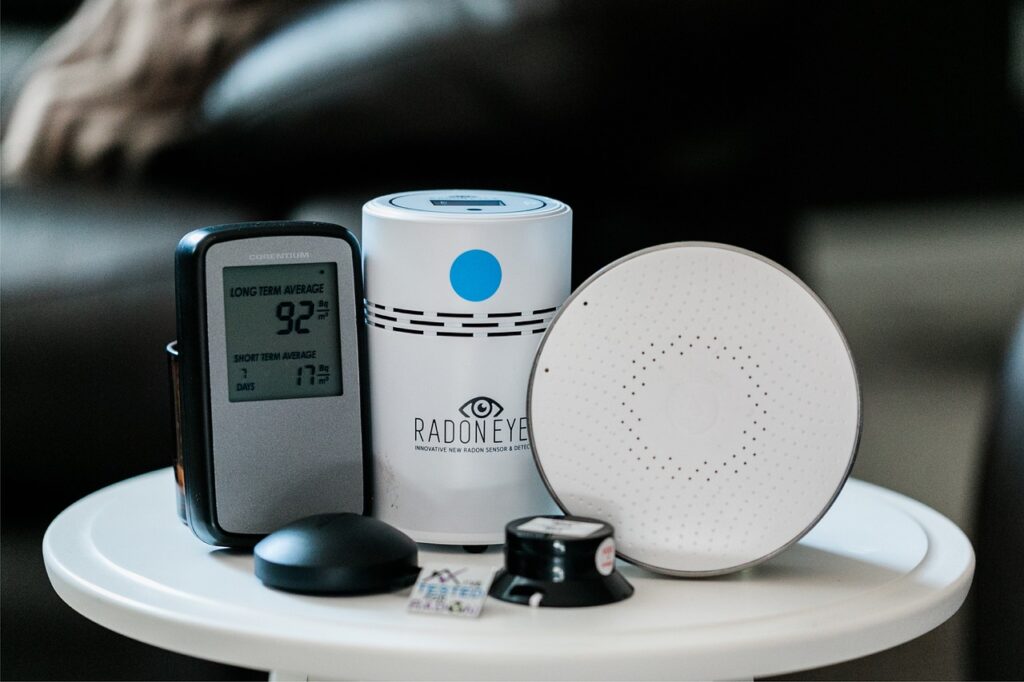When it comes to hidden health threats in the home, radon is a major concern that often goes overlooked. Radon is an odorless, colorless radioactive gas that occurs naturally as uranium breaks down in the soil. While it’s common to find traces of radon in outdoor air, it becomes a health hazard when it builds up inside homes. Prolonged exposure to high radon levels is the leading cause of lung cancer among non-smokers, making it a serious concern for homeowners. Testing for radon is a small, proactive step that can protect your family’s health. Here’s why testing is essential and how to address high radon levels if they’re detected.
What Is Radon and Why Is It Dangerous?
Radon is produced by the natural decay of uranium in rocks, soil, and water. As it moves up through the ground, it can seep into homes through cracks in foundations, gaps around pipes, and other entry points. Once inside, radon can accumulate to high levels, especially in areas with poor ventilation, like basements.
The danger of radon lies in its radioactive particles. When inhaled, these particles lodge in the lungs, releasing radiation that can damage lung tissue and lead to lung cancer over time. According to the Environmental Protection Agency (EPA), radon exposure causes about 21,000 lung cancer deaths each year in the United States. The risk is even higher for smokers exposed to radon, but non-smokers are also vulnerable.
Why Testing for Radon Is Important
While radon is impossible to detect without specialized equipment, testing for it is straightforward, affordable, and highly recommended. Here are the main reasons every homeowner should consider radon testing:
- Radon Is a Known Carcinogen
Unlike many other health risks, the link between radon and lung cancer is well-documented. The longer the exposure, the higher the risk. Since radon can seep into any type of home—new or old, with or without a basement—testing is the only way to know if you’re at risk. - Radon Levels Vary Widely and Aren’t Predictable
While certain regions have higher radon levels due to natural uranium deposits in the ground, radon levels can vary significantly from one home to the next, even in the same neighborhood. Just because your neighbor’s home tested low for radon doesn’t mean yours will, too. Testing provides you with an accurate assessment of your specific situation. - Radon Exposure Is Preventable
While exposure to radon is dangerous, it’s also preventable. If high levels of radon are detected in your home, there are effective mitigation techniques available that can significantly reduce radon levels. By testing, you’re taking the first step to protect your family from this invisible threat.
How to Test Your Home for Radon
Testing for radon is simple and accessible. Homeowners can choose between short-term and long-term tests, both of which are effective at identifying radon levels.
Short-Term Radon Tests: These tests take anywhere from 2 to 7 days and are a quick way to get a reading of radon levels. They’re ideal for initial testing and are widely available in hardware stores or online.
Long-Term Radon Tests: These tests measure radon levels over a period of 90 days to a year. They provide a more accurate picture of radon exposure because they account for fluctuations in radon levels due to weather and seasonal changes. Long-term tests are recommended if the initial short-term test shows higher-than-average radon levels.
Many states offer free or discounted radon test kits through their public health departments, so check your local resources as well. Once you have the test, follow the instructions for proper placement and exposure time to ensure accurate results. When testing is complete, send the kit to the lab specified on the package, and they will provide you with the results.
What to Do if Your Home Has High Radon Levels
If your test results show a radon level of 4 pCi/L (picocuries per liter) or higher, the EPA recommends taking action to reduce it. Fortunately, there are several effective mitigation options available:
Active Soil Depressurization (ASD): This is one of the most effective methods and involves installing a vent pipe system and fan to draw radon from beneath the house and expel it outside. ASD can significantly reduce radon levels and is a long-term solution for high radon readings.
Sealing Cracks and Openings: Sealing cracks in the foundation and walls can help reduce radon entry, although it’s usually done in combination with other mitigation methods.
Ventilation Improvements: In some cases, improving air circulation in lower areas of the home can help reduce radon levels. Increasing the airflow and installing vents or fans may help, although it’s typically used as a supplementary measure.
After installing a mitigation system, retest your home to ensure that radon levels have dropped and that the solution is working effectively.
How Often Should You Test for Radon?
Testing once is a good start, but radon levels can change over time due to shifts in the ground, structural changes in your home, or even changes in your ventilation system. It’s a good idea to test for radon every two to five years, especially if you’ve made any renovations or changes to your home. Periodic testing provides peace of mind and ensures that your mitigation measures are still effective if radon was detected previously.
The Bottom Line: Testing for Radon Is a Small Step with Big Benefits
Testing your home for radon is simple, affordable, and could save lives. The peace of mind that comes with knowing your family is safe from radon exposure is well worth the small investment in a test kit. If high levels are detected, mitigation is effective, and once your home is protected, you can rest easy knowing that this hidden health hazard is under control.
So as you go through your home maintenance checklist, make radon testing a priority. Protect your loved ones from this invisible threat and ensure your home remains a safe haven.


